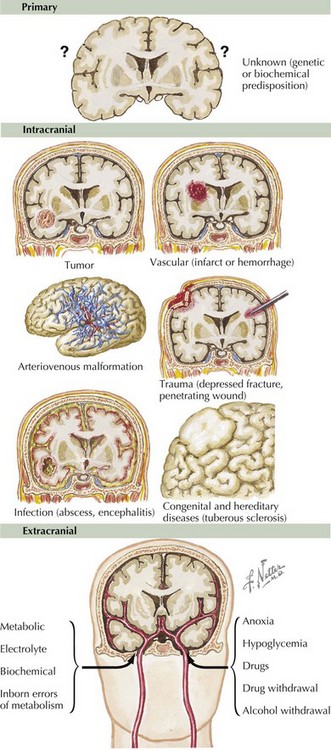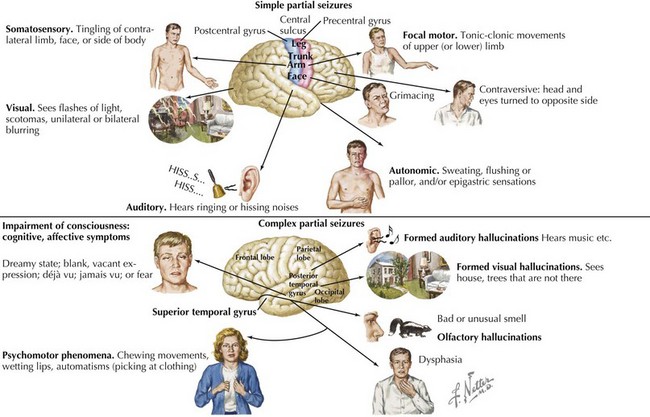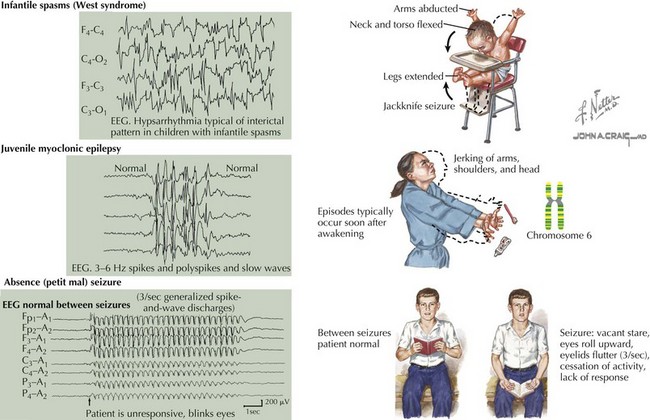74 Seizures
Etiology and Pathogenesis
Seizures can arise from many different sources (Figure 74-1). Primary seizures are thought to have a genetic or biochemical origin. Intracranial pathology, including tumor, vascular infarct or hemorrhage, arteriovenous malformation, trauma, infection, or congenital or developmental brain defects, can also result in seizure. They may also be provoked by electrolyte abnormalities (hypoglycemia, hypo or hypernatremia, hypocalcemia, hypomagnesemia), infection, anoxia, certain medications, drug intoxication or withdrawal, kidney or liver failure, and inborn errors of metabolism.
Clinical Presentation
Seizure Classification
Symptoms of simple partial seizures are often determined by the cortical area involved. These symptoms may be motor, sensory, autonomic, or psychic in nature. For example, those arising from the motor cortex result in rhythmic movements of the contralateral face, arm, or leg. See Figure 74-2 for more examples.
Absence seizures are brief episodes of impaired consciousness with no aura or postictal confusion. They typically last less than 20 seconds and are accompanied by few or no automatisms. Hyperventilation or photic stimulation often precipitates these seizures, which typically begin during childhood or adolescence, although they may persist into adulthood. In children, these seizures may initially go unnoticed and are often associated with decreased school performance or poor attention. The classic ictal electroencephalographic (EEG) correlate of absence seizures consists of 3-Hz generalized spike and slow-wave complexes (Figure 74-3).
< div class='tao-gold-member'>
Stay updated, free articles. Join our Telegram channel

Full access? Get Clinical Tree





